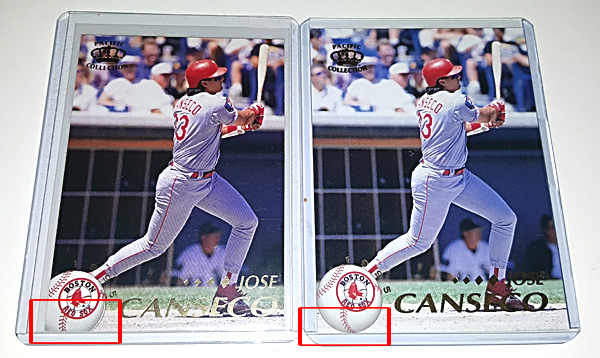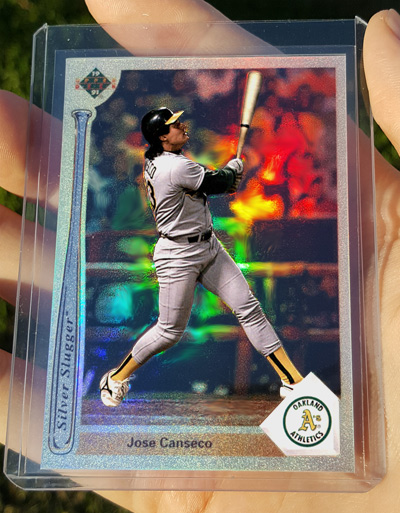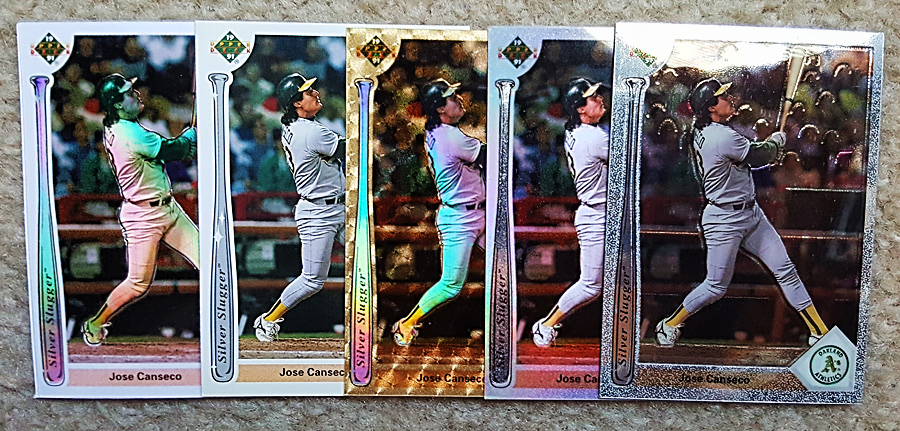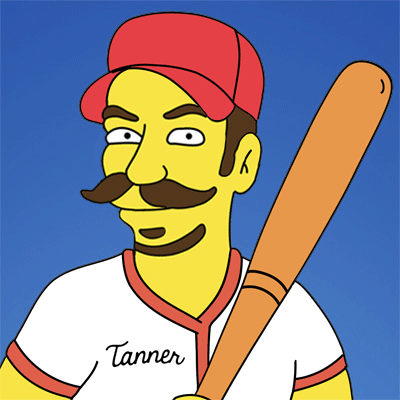As a focused card collector, you probably appreciate checklists. You might actually live and die by them. It gives you something to shoot for – there is a tangible finish line, so to speak. With the invention of 1/1’s and crazy amounts of parallels, that finish line has become all but a mirage, like an oasis in a desert. As collectors, what are we to do? Well, you can go one of two ways.

1) Self-imposed limits – Since having 100% of the cards of a player or team is impossible now, I’ve seen many people say they will ONLY pick up base cards – not parallels. Or ONLY pick up the cards from the years of a player’s playing career. This helps tremendously if a finish line is important to you.
2) Forget any finish line – To go this route, you may embrace the philosophy that a finish line was always a myth. Why? Because there are so many things out there that will never be checklisted, yet are mega cool. People who choose #2 understand that just because something isn’t checklisted, doesn’t mean it isn’t valuable.
Personally for me, I have decided to go with #2. As time goes by, I have found myself getting more excited with items not on anyone else’s checklist than anything else. A 1995 Bowman’s Best card is cool. A 1995 Bowman’s Best Refractor is cooler. A 1995 Bowman’s Best Refractor that doesn’t say refractor on the back is best!
The same goes for the embossed die-cut cards that have never been die-cut or embossed. These cards should not exist, which is what makes them exciting to me. The origins of these cards seem to typically come from former employees or bankruptcy auctions. Either way, things like this were never meant to see the light of day, and that is where baseball card myth can become legend.
Oversized cards? Yes, please. Showing more photo on a card is really cool to me, as it shows that it is something that was physically impossible to even be placed in packs in the first place.

The above pic shows a regular 1995 Pacific glossy card on the left (well, it is actually one of the promo cuadragulares variations, but I digress…) and an oversized matte version on the right. Both fit in a top loader (which is a big plus for me), though the one on the right fits VERY snug and is too big for a sleeve to even fit. Note the bottom left baseball on the right is much more visible. The total # of available cards on the left is probably in the bazillions, whereas the one on the right may never be seen in public again.
It is things like this that can make your collection stand out from the crowd. Many won’t care a lick about this sort of thing, but it has always appealed to me.
Don’t get me wrong … I *LOVE* superfractorliciousoneofoneuber3xpatch cards. I just picked this up recently, and LOVE it:

Things get REALLY cool when you mix oddball error types of things with high end cards, like this:
A 1/1/1/1 – I wrote about this a few days ago, but it HAD to make an appearance here as well. As forum member Keyser Soze said “A 1/1 so nice, they stamped it twice!”

Anyway, as a collector, if you are into variations, prototypes, and other things that aren’t on any checklist but your own, the question remains: Where do you draw the line?
This, my friends, is where we pick up from where we left off in my last article, “An Unknown Holy Grail Has Landed”. I showed off this:

My beloved 1991 Upper Deck Chrome test card. It was created by the inventors of the chromium technology to pitch to Upper Deck. Apparently, UD decided against it, so they went to Topps and the rest is history. With this card, I felt like I won the internet, collecting and life. Okay, maybe that is a *tad* too far, but yeah … I kind of love this card 🙂
Then I got a message. And a picture.
It showed my new card … as a refractor!
I was in love.
Someone sent me a picture of a framed sheet they had for 25 years. The cards included the same variations and cards that were in the lot that I got the Canseco from, but in refractor form. I was both floored and excited, because surely I was going to be able to make a deal with this gentleman!
Just to make sure, I asked the twitterverse for help …

I promptly reached out to him and made him an offer he couldn’t refuse.
He refused. (Twitterverse, you have failed me!)
I made an even BIGGER offer he REALLY couldn’t refuse.
He refused again.
I decided the third time was a charm, and said now is the time to go big or go home.
Well … he sent me packing. I had no idea someone else on the planet would like this as much as I do, but apparently so! It is my hope that he will change his mind at some point…if he hasn’t put a restraining order on me just yet, that is 🙂
For now, I’m left with the possibility that I may never have that card in my collection. And that is okay. You can’t have them all! (Grumble, grumble.)
In the meantime, I decided to have some fun so I thought I’d share with you all.
Since I’ve seen the regular, I wondered what it would look like as a SUPERFRACTOR – but not just a superfractor … a SUPERreFRACTOR …

The card itself is superfractor, but the player and the bat are refractor material. Looks better in person, for sure, but thought I’d share!
Here is another version: an REversaFRACTOR – The entire card is “regular” but the bat and player are refractor. I REALLY like how this turned out.

My favorite though, is this: the plain ole refractor.

It does have a bit of a twist, though – the silver slugger bat is actually chrome! I took a pic up close so you could see the reflection of my finger in it.

The back is kind of neat too.

From a philosophical perspective, this thing has several layers:
The first thing that gets me, is this: Since the real sheet is a prototype, what is mine? A prototype of a prototype? Did I just make a 1991 Upper Deck Silver Sluggers Refractor Prototype Prototype?
I’m not sure, but either way, I love the sheet and I love what I made. I still hold out hope I’ll be able to land the sheet, or someone else will come forward with one for my collection. Until then, I think the “rainbow” I made up will suit me just fine for now.

Left to right:
1991 Upper Deck Silver Sluggers
Reversafractor
Base
SuperRefractor
Refractor Prototype Prototype
Chrome Prototype



Nice info on the Canceco silver slugger card. What would be the value of such a card. Is there quite a few in circulation. Where can one purchase such a card.
Hi Lou! To my knowledge, while there likely are millions of regular Silver Slugger Upper Deck cards in existence, the chrome / refractor versions did not have many at all. The value truly is in the eye of the beholder. For many, this card may not be interesting at all, since it isn’t even in the Beckett, but for me, I love these kinds of cards, so I’d value them higher than anyone else! If you have any other questions, you are welcome to email me at tanmanbaseballfan@gmail.com